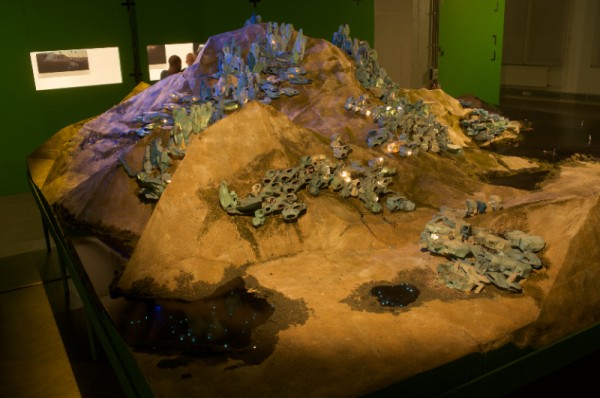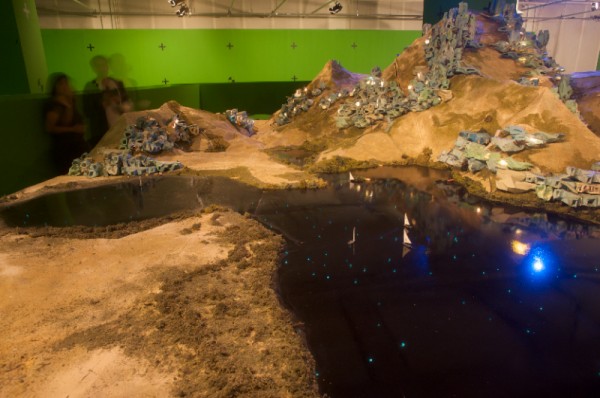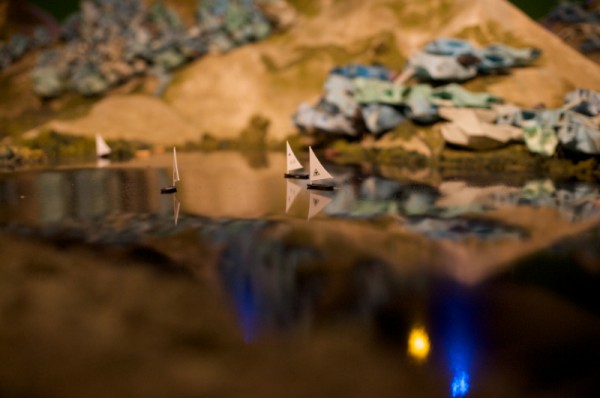Architect Liam Young’s project named “Under Tomorrow’s Sky”, displayed at Eindhoven’s MU brings us a refreshing twist to sci-fi architecture.
Forget the neon-city lights of the 80s, the matte-white polymer look of Macs and the sleek, glossy designs that we’ve once associated with the future of civilization. The idea originated in think tank compromised of awesome architects, digital poets, visionaries and a multitude of both creative and scientific geniuses. Under Tomorrow’s Sky was brought to life with a little help from set artists who worked on prominent sci-fi films like Blade-Runner and Alien to bring us one of the most shocking takes on future architecture.
While at first glance you may not discern much from the pictures, imagine a city that is completely incorporated and organic, one with the land it’s built on. What you see here is houses growing off the side of mountains, or springing from the ocean, connected together through stairs and settlements accessible via zero-energy boats. All this to create a spectacular, eco-friendly organic world for humans to live in without dependency on oil. The end result of a spectacular and natural feel that not only innovates how we interact with the land around us, but also allows for expansion without destruction.
While all of this is pure speculation for the sake of art, the theories that fuel the project’s momentum are grounded on reality, in a post-capitalist society that is slowly returned to its roots. While we may not be able to see these pods spring up in our lifetimes, it’s interesting to think about the future generations looking back to our towers of steel and concrete, from the comfort of their little stone homes. Under Tomorrow’s Sky will be on display at the 2013 Lisbon Architecture Triennial, where you’ll be able to see the model up close and personal, if the pictures aren’t enough to spark your imagination.
Source: Inhabitat
Love this? Check out more great articles from Walyou: Zaha Hadid to Design Riyadh’s Most Exuberant Metro Station and 3D-Printed Tracheal Splint Saves Baby’s Life













